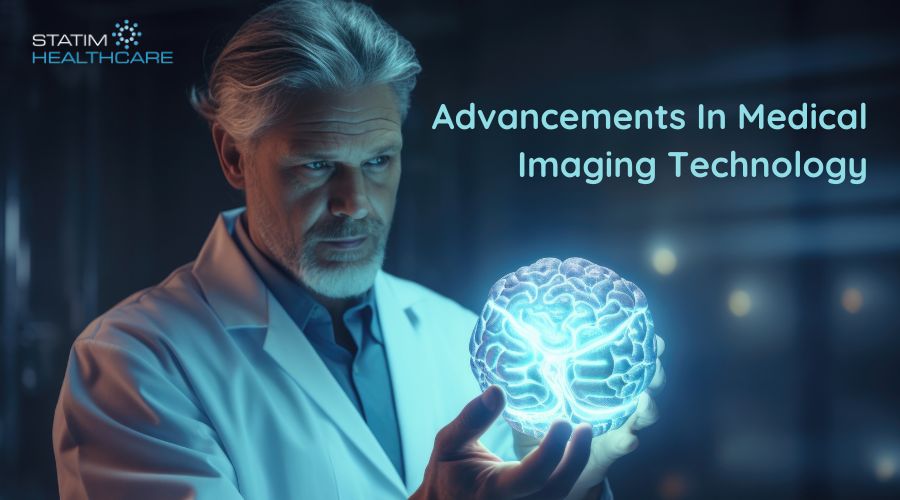In recent years, the field of healthcare sectors has gone through significant changes with the introduction of advanced medical imaging technologies. Medical imaging serves millions of lives each year. It is an essential tool for doctors and medical professionals for diagnosing, treating, and monitoring diseases and medical conditions. When it comes to health imaging services in USA several healthcare facilities aim to deliver the utmost care for their patients. In this article, we will explore the evolution of medical imaging technology highlighting its areas of application and the impact of AI-driven technology in the healthcare sector.
The Evolution of Medical Imaging Technology
In the past few decades there has been a transformation, in medical imaging technology, which has had a profound impact on healthcare and the way patients are treated. Here, we will explore the evolution made in various types of imaging technology like computed tomography (CT) magnetic resonance imaging (MRI) positron emission tomography (PET) and ultrasound (US).
The introduction of new modalities and significant enhancements in existing ones have resulted in an increase in the demand for imaging services. For example CT scanners have made progress with the models capable of capturing 128 slices in less than a second. This impressive speed allows for imaging of the chest, abdomen and pelvis in, under 15 seconds enabling CT volume images to be obtained.
MRI technology has also witnessed significant advancements, particularly with the introduction of 3T-field strength magnets. These magnets offer faster, more detailed, and thinner imaging sections compared to their 1.5T counterparts. MRI has proven its competence in non-invasive imaging of the heart, enabling real-time assessment and perfusion studies.
Ultrasound technology has experienced growth as well, with the development of smaller, high-quality devices. Portable ultrasound machines, some as small as a PDA, are now capable of producing 3D and 4D images, allowing for detailed fetal imaging and ultrasound contrast imaging. Additionally, ultrasound’s potential in evaluating the liver is set to rival that of CT and MRI with the approval of ultrasound contrast agents.
Areas of Application
Radiology
Medical imaging plays a crucial role in the field of radiology as it enables healthcare practitioners to visualize and examine the structures of the human body including bones organs and tissues. X rays CT scans and MRI scans are frequently employed in this field to identify irregularities, diagnose ailments and facilitate procedures.
Cardiology
Medical imaging is extensively utilized in cardiology to evaluate the structure and function of the heart. Techniques like echocardiography, cardiac CT, and cardiac MRI help in assessing heart health, identifying heart diseases, and planning appropriate treatment strategies.
Oncology
Medical imaging is instrumental in the diagnosis, staging, and monitoring of cancer. Techniques like PET scans, CT scans, and MRI scans are used to detect tumors, assess their size and location, and evaluate treatment response. Best medical imaging practices in oncology help in guiding targeted therapies and monitoring disease progression.
Neurology
Medical imaging is vital for the field of neurology as it allows us to obtain images of the brain and nervous system. Various techniques, including MRI, CT scans and functional imaging such, as fMRI are used to diagnose disorders detect brain injuries and assist in procedures.
Obstetrics and Gynecology
Medical imaging technology like ultrasound is widely used in obstetrics and gynecology for prenatal screening, monitoring fetal development, and diagnosing gynecological conditions. It enables healthcare providers to visualize the reproductive organs and monitor the health of the fetus during pregnancy.
Orthopedics
Medical imaging techniques such as X-rays, CT scans, and MRI scans are extensively used in orthopedics to assess bone fractures, joint conditions, and musculoskeletal disorders. These imaging modalities help in accurate diagnosis, surgical planning, and monitoring the progress of orthopedic treatments.
Interventional Procedures
Medical imaging technology is also utilized during interventional procedures, such as image-guided biopsies, minimally invasive surgeries, and catheter-based interventions. Real-time imaging guidance ensures precise targeting and minimizes risks associated with these procedures.
The Impact of Artificial Intelligence on Medical Imaging
The impact of Artificial Intelligence (AI) on the medical imaging field for providing the best medical imaging service. AI can help trace inflammation-related myocardial tissue changes and predict treatment response. It has the potential to enhance medical screenings, analyze patient risk factors, and facilitate early disease identification. However, while discussions about the impact of AI on radiologists have been prominent, the impact on radiographers is often overlooked.
One potential role for diagnostic radiographers could be developing and validating low-dose CT protocols, thus increasing their skills in visual image analysis. Incorporating AI into medical imaging can improve precision medicine, reduce physicians’ workloads, and provide better medical imaging services in USA.
Experience the Best Medical Imaging Services in USA with Statim-Healthcare
Trust Statim-Healthcare for the best medical imaging services in USA. Our advanced medical imaging technology and expert healthcare professionals ensure accurate and timely results. We offer a range of imaging modalities for cardiology, neurology, oncology, orthopedics, obstetrics and gynecology, and interventional procedures. Contact us today to schedule your appointment and experience the difference in healthcare expertise.

